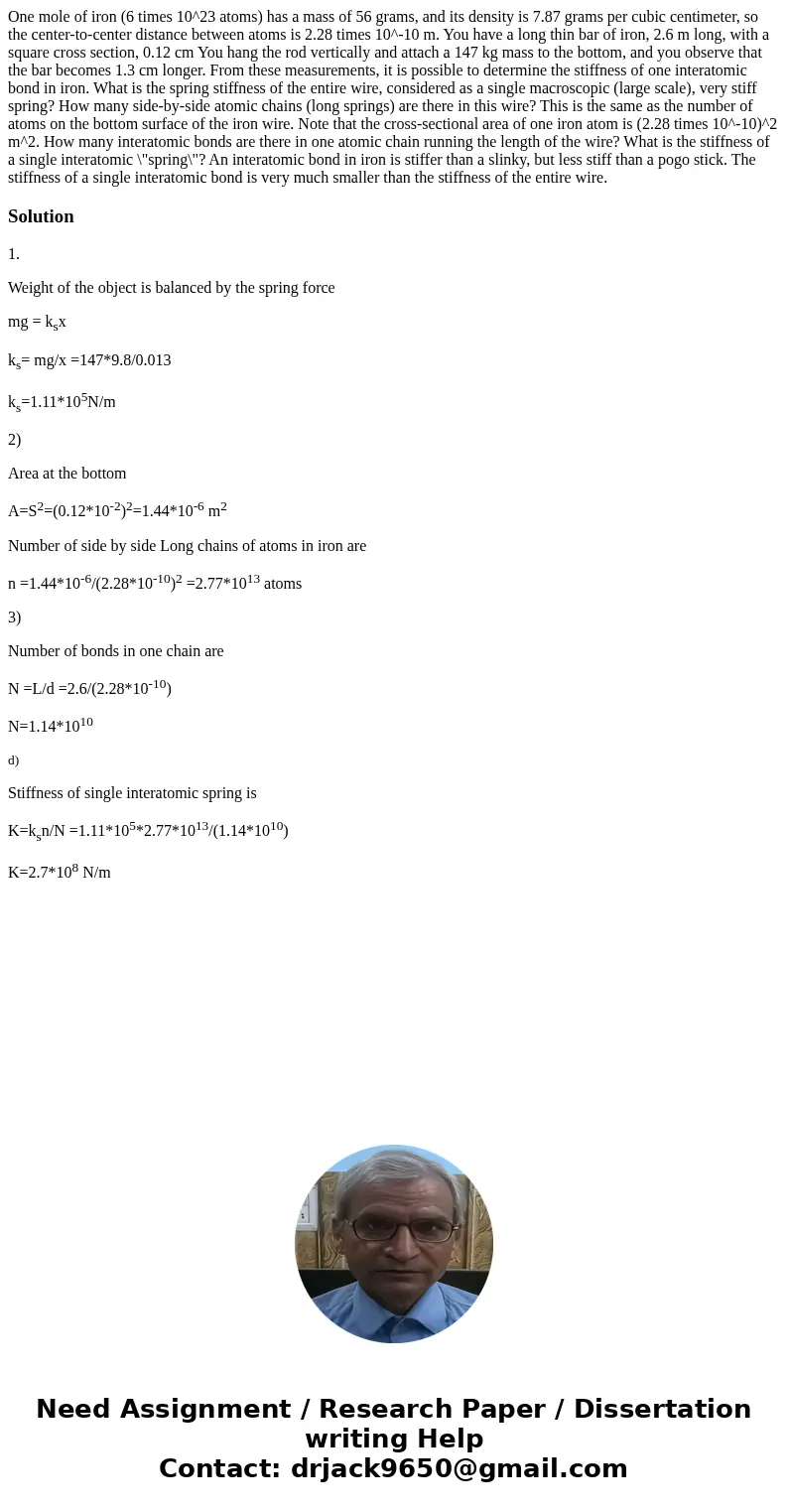One mole of iron 6 times 1023 atoms has a mass of 56 grams a
One mole of iron (6 times 10^23 atoms) has a mass of 56 grams, and its density is 7.87 grams per cubic centimeter, so the center-to-center distance between atoms is 2.28 times 10^-10 m. You have a long thin bar of iron, 2.6 m long, with a square cross section, 0.12 cm You hang the rod vertically and attach a 147 kg mass to the bottom, and you observe that the bar becomes 1.3 cm longer. From these measurements, it is possible to determine the stiffness of one interatomic bond in iron. What is the spring stiffness of the entire wire, considered as a single macroscopic (large scale), very stiff spring? How many side-by-side atomic chains (long springs) are there in this wire? This is the same as the number of atoms on the bottom surface of the iron wire. Note that the cross-sectional area of one iron atom is (2.28 times 10^-10)^2 m^2. How many interatomic bonds are there in one atomic chain running the length of the wire? What is the stiffness of a single interatomic \"spring\"? An interatomic bond in iron is stiffer than a slinky, but less stiff than a pogo stick. The stiffness of a single interatomic bond is very much smaller than the stiffness of the entire wire. 
Solution
1.
Weight of the object is balanced by the spring force
mg = ksx
ks= mg/x =147*9.8/0.013
ks=1.11*105N/m
2)
Area at the bottom
A=S2=(0.12*10-2)2=1.44*10-6 m2
Number of side by side Long chains of atoms in iron are
n =1.44*10-6/(2.28*10-10)2 =2.77*1013 atoms
3)
Number of bonds in one chain are
N =L/d =2.6/(2.28*10-10)
N=1.14*1010
d)
Stiffness of single interatomic spring is
K=ksn/N =1.11*105*2.77*1013/(1.14*1010)
K=2.7*108 N/m

 Homework Sourse
Homework Sourse